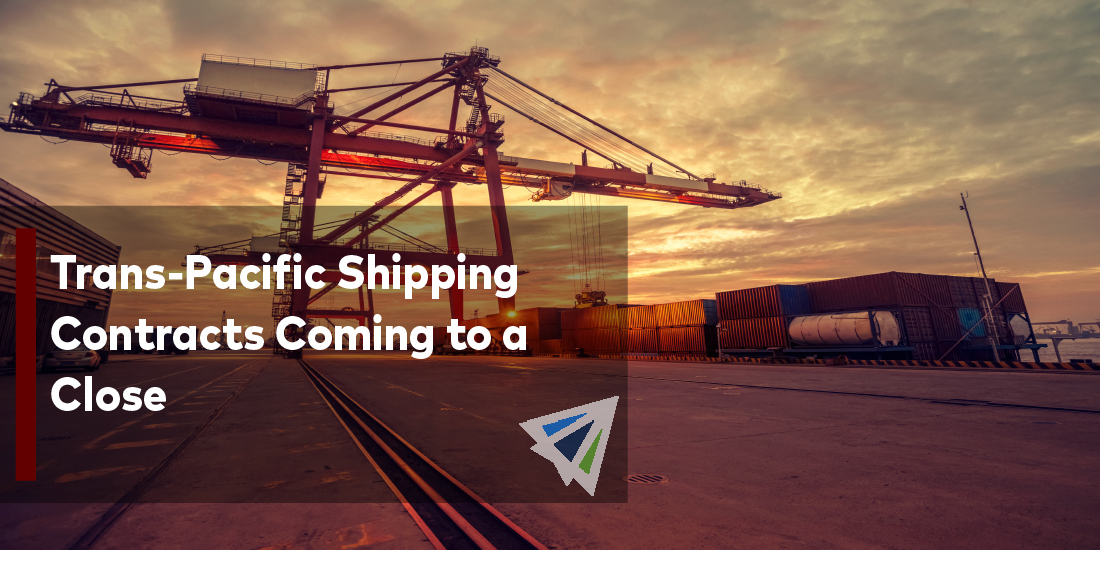The trans-Pacific shipping industry’s annual contract season is coming to an end, and everyone is eager to see where contract prices settle in the next weeks. The position is extremely challenging this year as the most recent round of contracts were signed at historically high levels and the current contract RFP season is taking place at a time when spot rates are still decreasing. The risk to U.S. import costs, liner profitability, and service dependability all depends on the final contract prices.
Weak import demand caused by bloated stockpiles, with inbound volumes approximating those of spring 2020 when COVID-19 lockdowns initially began, is one of the main problems hurting the trans-Pacific shipping industry. With the weak demand and declining spot rates during the 2023 contract RFP season, the concern moving forward is that shipping lines won’t be able to secure enough contract business at prices high enough to cover costs. If this occurs, carriers might take dramatic measures and reduce trans-Pacific capacity far more, similar to what they did in 2020.
Another potential problem is that spot rates could increase if shipping lines reduce capacity just as import demand begins to increase in the second half after inventories start to decline. If this happens, shippers who secured inexpensive annual contracts starting on May 1 might eventually find that their contract cargo is bumped by carriers moving higher-paying spot containers. This would be a repetition of what transpired three years ago, further complicating the current circumstance.
Complexities of Upcoming Contracts
The 2023 trans-Pacific RFP season is complicated, as the digital freight forwarder Flexport recently discussed in a presentation. Nerijus Poskus, Flexport’s vice president of ocean strategy and carrier development, provided additional insight in an interview with FreightWaves. The business currently anticipates that trans-Pacific contract rates would settle at a level that is around 30% higher than current floating levels, but about 70% lower than 2022 base contract rates, according to Anders Schulze, Flexport’s global head of ocean (not including premium surcharges).
Poskus asserts that the majority of fixed contracts must be completed by the first week of April, with some of the major BCOs (beneficial cargo owners) having already signed and others on the verge of doing so. Additionally, he adds that the situation is still shaky because he has heard that the major BCOs are agreeing to rates that are higher than those on the open market.
Importers from the United States were forced to sign annual contracts at exorbitant rates last year due to the rise in spot pricing in 2021–2022, as well as the decline in service reliability. Also, it persuaded them to import considerably more cargo than they really needed, which had a significant “bullwhip effect” and caused inventories in 2023 to rise. Trans-Pacific spot rates continue to decline despite carriers already reducing capacity, which is due to excessive inventories. Spot rates should finally stop falling and begin to rise if imports increase in the second half as anticipated and stocks decrease. With the money they will save in the first half of the year on the spot market, some importers are willing to face the future spot risk and forego contracts in 2023.
In conclusion, the RFP season for the 2023 trans-Pacific contract is a complicated and uncertain situation that will have significant effects on the price of imports into the United States, the profitability of the liner, and the quality of the service. For shipping lines, the timing of the current contract RFP season combined with the fact that spot rates are still falling and that inventories are overstocked as a result of low demand, makes things difficult. Nonetheless, it is hoped that imports would increase in the second half, bringing at least a glimmer of a conventional peak season and eventually putting an end to spot rates’ downward trend.
